Key takeaways
- Love and Logic parenting focuses on guiding children to make positive choices through natural consequences, fostering responsibility and confidence.
- Setting clear and kind boundaries promotes a sense of safety and trust, leading to increased independence and cooperation.
- Empathy coupled with firmness helps maintain a respectful environment while reinforcing limits, turning discipline into a collaborative process.
- Consistency in enforcing boundaries is key, but flexibility is essential to adapt to life’s unpredictability, ensuring children feel secure and supported.

Understanding Love and Logic Parenting
Love and Logic parenting really reshaped how I view discipline. It’s not about control or punishment but about guiding children to make good choices through natural consequences. Have you ever realized how powerful it can be when kids feel respected and trusted rather than simply told what to do?
What struck me most was the balance between empathy and firmness. When I started using Love and Logic, I saw that setting clear boundaries didn’t mean being harsh. Instead, it meant caring enough to let my child experience the outcomes of their decisions, which built their responsibility and confidence.
I remember a moment when my child tested a boundary, and instead of reacting with frustration, I calmly offered choices and consequences. That shift in my reaction opened up a new level of communication between us. It made me wonder—how often do we underestimate the strength of love combined with logical parenting strategies?
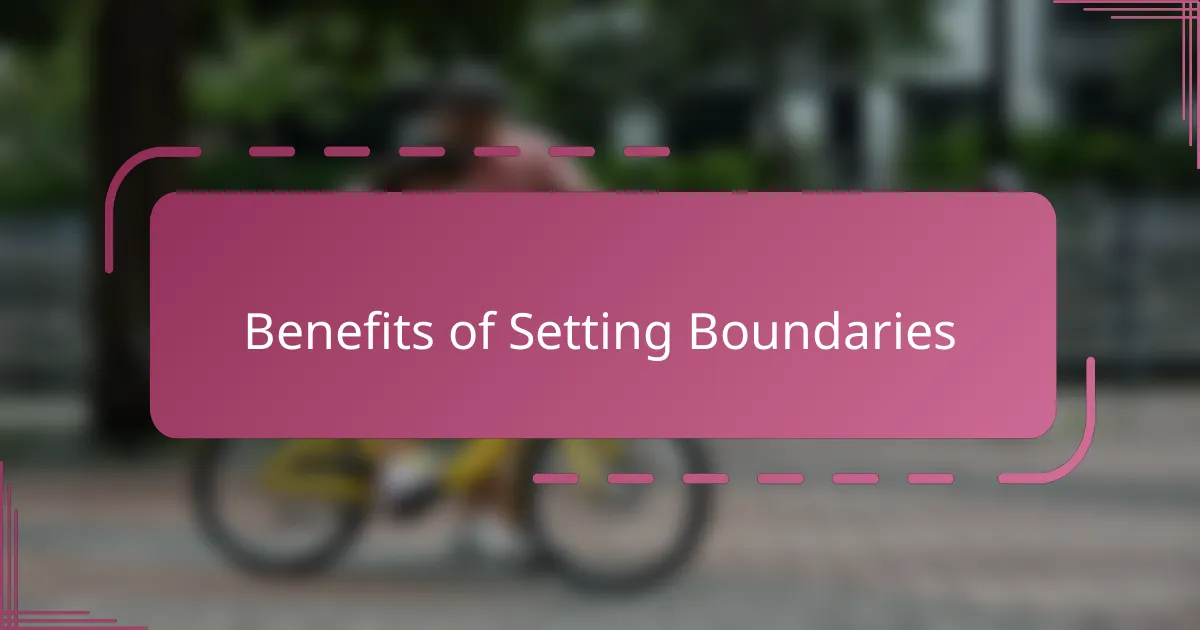
Benefits of Setting Boundaries
Setting boundaries has been a game-changer in my parenting journey. I noticed that when I clearly communicated limits with kindness, my child actually felt safer and more understood. Have you ever thought about how boundaries can create a sense of trust rather than tension?
One of the biggest benefits I found was the boost in my child’s independence. By allowing natural consequences within set limits, my child started taking ownership of their choices. It felt rewarding to watch them grow more confident without me having to constantly intervene.
Honestly, setting boundaries also brought unexpected peace to our home. When expectations are clear, there’s less power struggle and more cooperation. I sometimes wonder why I hesitated so long to establish these guidelines that feel so nurturing and firm at the same time.
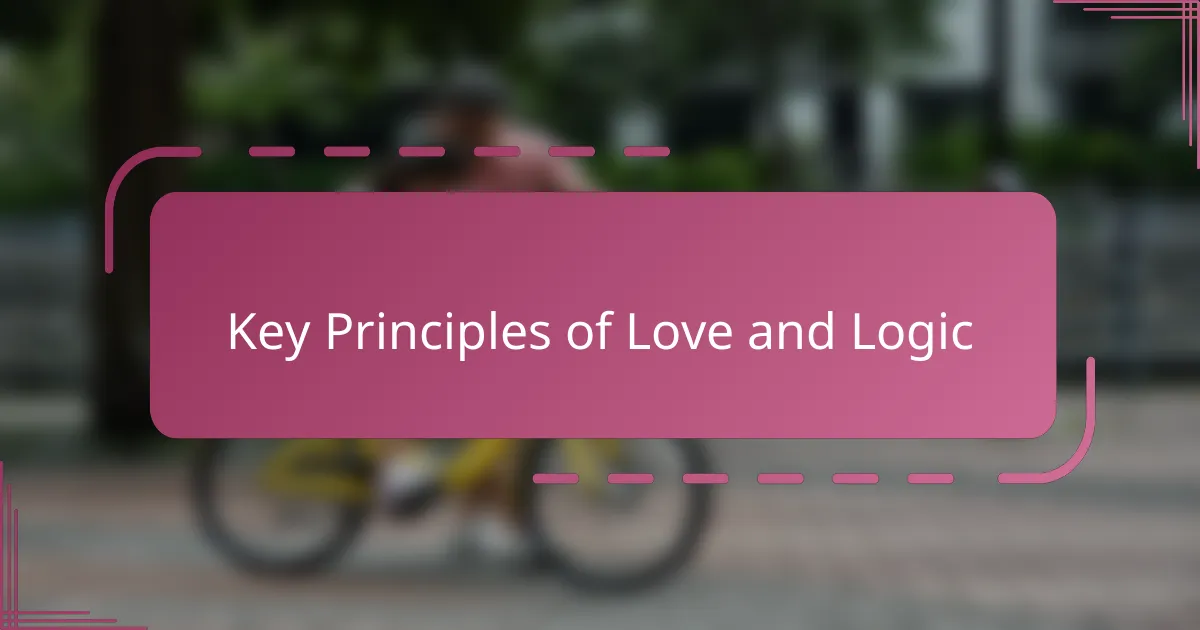
Key Principles of Love and Logic
One of the key principles of Love and Logic that really resonated with me is the idea of letting children experience natural consequences. At first, I worried this might be too harsh, but I soon saw how it helped my child learn from real-life outcomes in a safe environment. Isn’t it amazing how much more meaningful lessons become when kids connect the dots themselves?
Another important aspect is empathy paired with firmness. I found this balance tricky in the beginning—how do you show love and understanding while still holding firm boundaries? Over time, I realized it’s about respecting my child’s feelings without losing sight of the limits that keep them safe. This approach made discipline feel less like a battle and more like teamwork.
Finally, offering choices instead of demands was a game changer for us. Instead of saying “Do this,” I started saying, “Would you rather do it now or in five minutes?” Giving my child some control empowered them and reduced a lot of daily conflicts. Have you noticed how kids often rise to the occasion when they don’t feel cornered? I sure have.
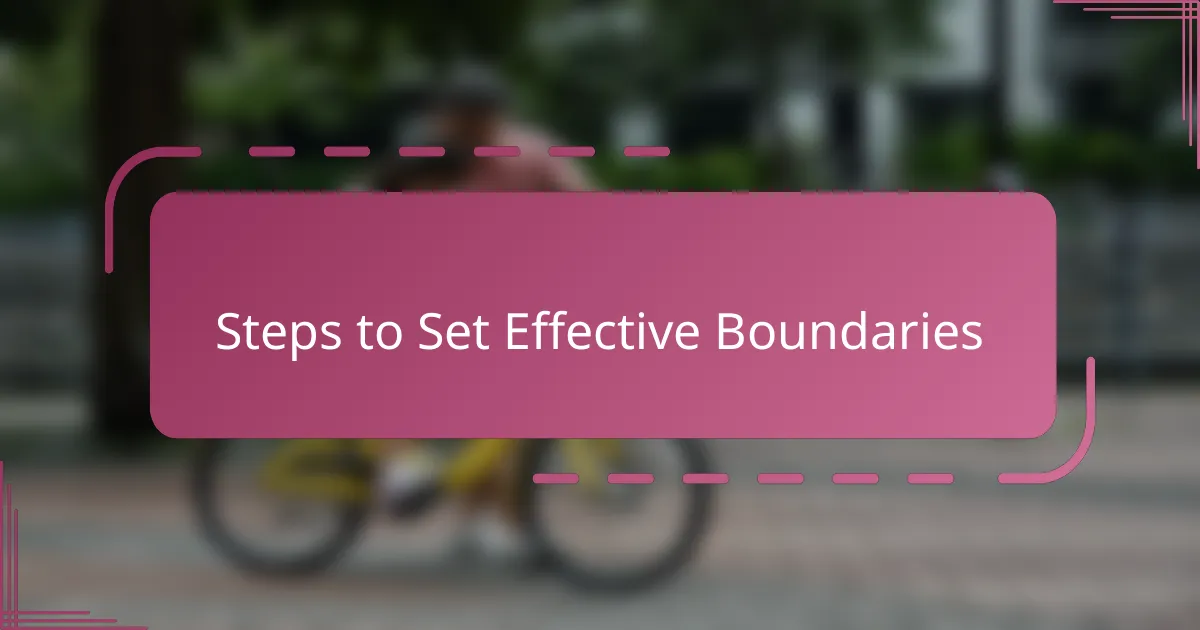
Steps to Set Effective Boundaries
The first step I took was to clearly define what boundaries were necessary. I asked myself which behaviors needed gentle limits and which needed firm lines, so I could be consistent without feeling overwhelmed. Have you ever noticed how clarity about what matters most makes it easier to stay calm and confident when challenges arise?
Next, I focused on communicating those boundaries with kindness and simplicity. Instead of lengthy explanations, I used straightforward language paired with empathy, which helped my child understand the why behind the rules. It felt like our conversations became less about control and more about cooperation—have you tried framing limits as shared agreements rather than ultimatums?
Finally, I made sure to follow through with logical consequences that felt natural rather than punitive. When my child faced these outcomes, it wasn’t about winning or losing but about learning and growing together. I found that this step truly cemented the boundaries, turning them into tools for empowerment instead of battles to be fought. Have you experienced how consistent follow-through can transform resistance into responsibility?
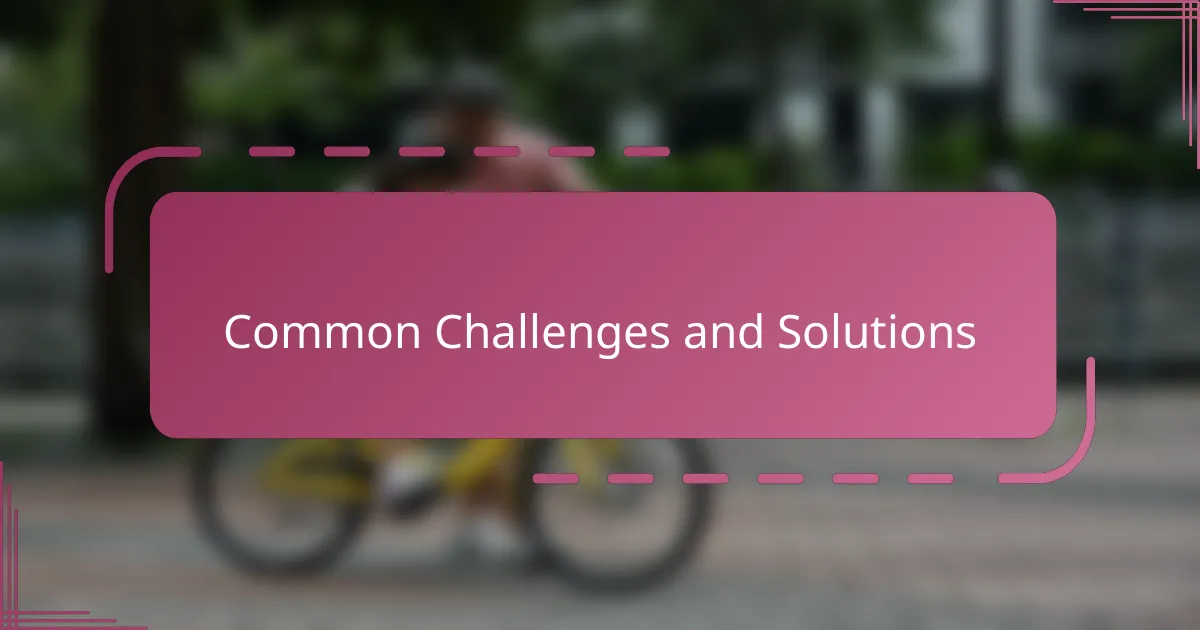
Common Challenges and Solutions
One challenge I faced early on was feeling torn between being too lenient or too strict. Have you ever wondered if you’re doing more harm than good by giving in too easily? What helped me was remembering that love and logic isn’t about perfection but progress—so I gave myself grace and stayed consistent with gentle firmness.
Another common struggle is managing my own emotions when boundaries get pushed. I used to get frustrated quickly, which only escalated tension. Slowly, I learned to pause and breathe before responding, which shifted the entire dynamic. Isn’t it incredible how just a moment of calm can turn a potential meltdown into a learning moment?
Sometimes, it felt difficult to let natural consequences play out without stepping in to “rescue” my child. I worried they might get hurt or discouraged. But watching them face those outcomes and bounce back stronger showed me the true power of resilience. Have you seen how stepping back can actually build your child’s confidence in ways endless reminders never could?
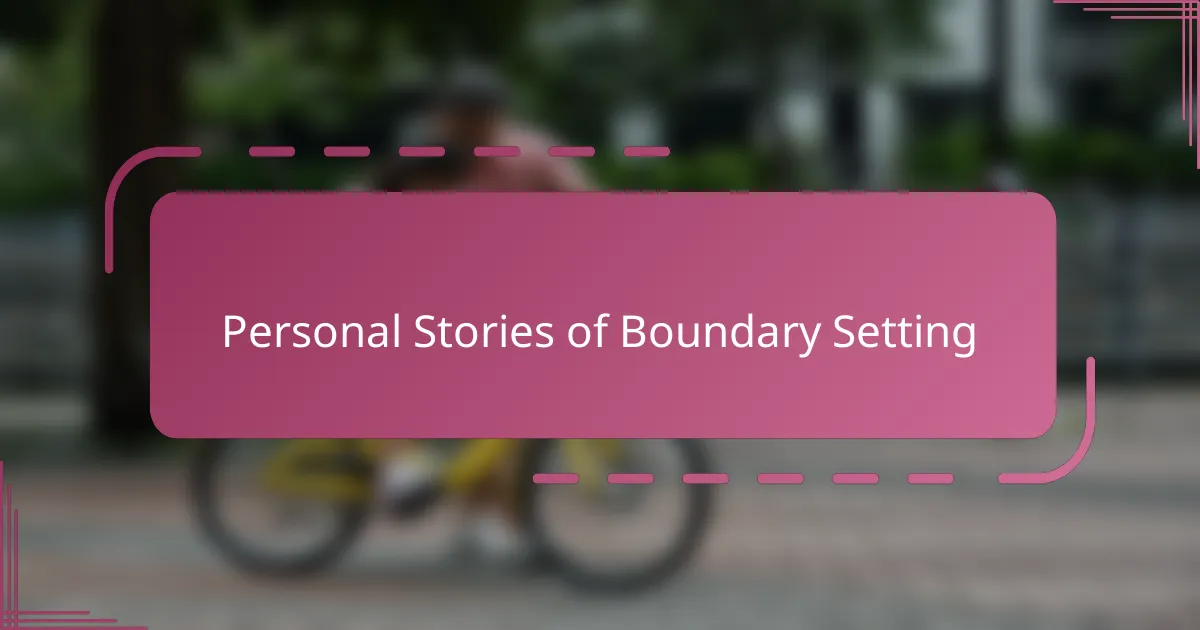
Personal Stories of Boundary Setting
I recall a day when my child refused to wear their coat despite the chilly wind. Instead of insisting, I calmly explained the choice: “You can wear the coat and stay warm, or skip it and feel cold.” Watching them decide and experience the cold firsthand made the lesson stick far more than any lecture could. Have you ever been surprised by how letting kids make mistakes leads to real understanding?
There was also a moment when bedtime became a daily struggle. I set a boundary that screen time ended an hour before bed, offering a choice between reading or quiet play. At first, my child resisted, but after a few nights, they started choosing reading on their own. That small step felt like a huge win in creating cooperation rather than conflict.
Sometimes, I caught myself wrestling with guilt for not stepping in immediately when consequences kicked in. But I realized that by holding steady, I was showing love in a way that teaches independence. Have you noticed how love combined with logical limits creates a safe space for growth? I surely have, and it’s been transformative.
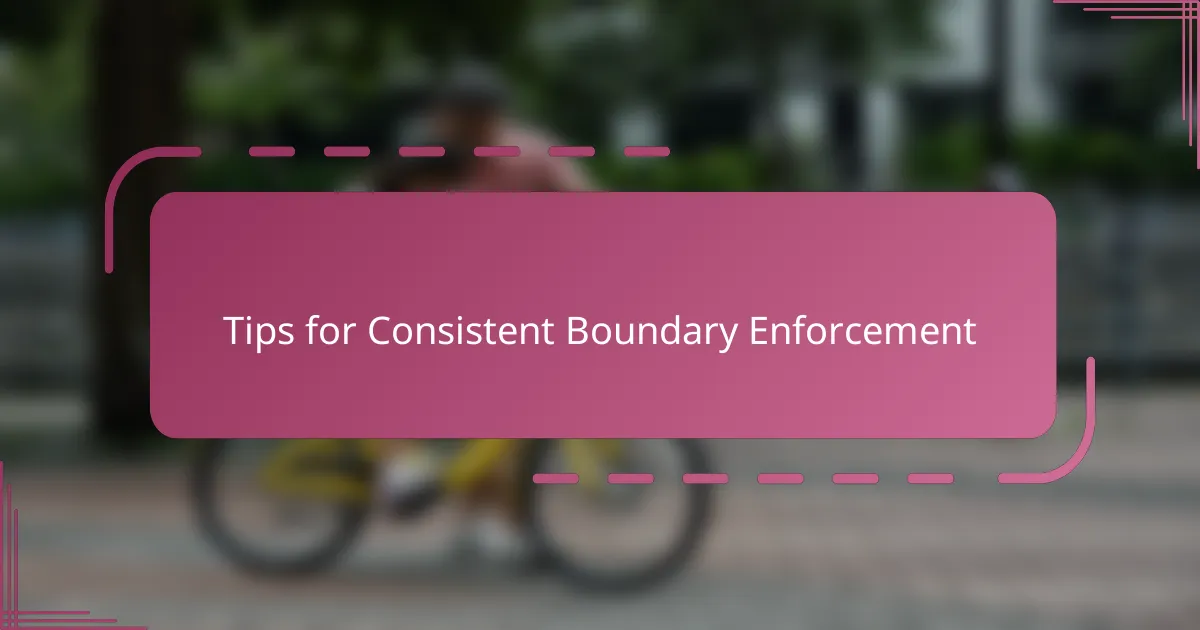
Tips for Consistent Boundary Enforcement
Staying consistent with boundary enforcement felt like the hardest part in the beginning. Have you ever found yourself wavering because it’s easier to let things slide one time? What helped me was creating simple reminders for myself and committing to follow through every single time—it turned those moments of hesitation into steady, confident guidance.
I also learned that consistency doesn’t mean rigidity. Sometimes, life throws unexpected curveballs, and flexibility is necessary. But I made sure the core limits stayed firm, which gave my child a dependable sense of safety. Isn’t it reassuring when kids know what to expect, no matter what’s going on around them?
One trick that worked wonders was avoiding endless explanations during enforcement. I kept my responses calm and clear, reinforcing the boundary without rehashing the whole rule. This approach saved energy and reduced power struggles, making consistency less stressful and more natural. Have you noticed how brevity and calmness can really change the tone of those tough moments?


